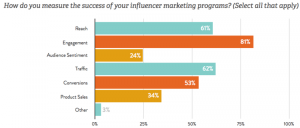Numerous industry sources are reporting that B2B eCommerce sales will top $ 1 trillion by 2020, and a growing number of retailers now expect the process of buying from a supplier to be as easy as making a B2C purchase. This trend––along with the rise of B2B marketplaces like Amazon Business––has fueled the adoption of B2B wholesale eCommerce technology among manufacturers and distributors.
Whether you’ve already adopted a wholesale eCommerce solution or are thinking about doing so, the five tips in this post will help you to lay the groundwork for success.
5 Keys to Wholesale eCommerce Success
1. Foster Communication Between Departments
In the early stages, regardless of the size of your company, it’s vital that different departments work hand-in-hand when implementing B2B eCommerce.
Successful implementation means strong cross-departmental cooperation to pull the different strands of marketing, IT, sales, and customer service together. Full integration, for instance, of your enterprise resource planning (ERP), accounting, sales, and analytics software, will create an efficient companywide system that can easily be monitored and improved in the long-term.
During the adoption period, it’s also important that customers used to working with “old school” ordering methods (like fax, phone, email etc.) are given direct support if it’s required. New B2B eCommerce channels will always be markedly more efficient and convenient than traditional avenues of communication, so it’s critical to support your customers as they adopt this new way of placing orders.
2. Replicate Aspects of Successful B2C Platforms
As has been mentioned, retailers’ expectations of B2B eCommerce are guided by their familiarity with B2C platforms. Wholesale eCommerce portals should have the same intuitive interface, search functions and guided sales processes that characterize their B2C counterparts. 92% of customers prefer to research products through online tools, so make sure you offer that functionality.
Focusing on providing a feature-rich experience––one that both imitates B2C best practices and accommodates the unique requirements of B2B customers will also positively impact customer retention and acquisition. Customizable profiles with order histories and favorite items, for instance, can streamline reordering and renewal processes, whilst strong branding and descriptions can drive sales.
As with B2C, you should also make sure that you’re optimizing for different platforms, not just desktop. Offering a seamless mobile commerce experience on tablets and smartphones will mean that retailers can order from anywhere, 24/7.
3. Actively Encourage Retailer Adoption
Once your portal is up and running, it’s time to get people on board. The size of your client-base will ultimately determine the best strategy to adopt. Smaller companies will likely find it more productive to rely on direct phone outreach, whereas larger ones may tend towards email drip campaigns and direct mail.
It’s important to include references to, and information about, your eCommerce platform wherever it’s appropriate to do so. Email signatures, links on your company website, and information in product shipments all have a place. Your reps can also play a huge role in encouraging the adoption of your eCommerce platform, and new incentive and commission structures should reflect this.
4. Utilize Analytics From the Get-Go
Analytics are important from the perspectives of both client acquisition and retention. A solid understanding of certain key metrics – number of visitors, engagement, ROI on marketing investment compared to other methods – will enable you to improve your portal’s usability and conversion rates over time.
This area is a good example of where IT, sales and marketing departments need to overlap for the data to be converted into actionable insights. There are huge opportunities for split-testing, segmented targeting, and demographic profiling (to name just a few examples). You can also incorporate feedback mechanisms, such as surveys, directly into the buying process.
5. Capitalize on New Marketing Opportunities
Having a single, readily-accessible online platform creates a range of new marketing opportunities, particularly when combined with email outreach. You can, for instance, link directly to new product pages or promotional materials, enabling customers to order with only a few clicks. Discounts, seasonal promotions and short-term special offers can also be targeted at different customer segments based on their historic purchases or preferences.
What is perhaps most important, however, is the fact that you’re able to measure the effects of all new marketing initiatives. The number of people clicking through from emails can be tracked, different product images, descriptions and promotional materials can be tested and compared, and you can define and “plug up” the points in the buying process where customers are falling off.
Questions about implementing B2B eCommerce for your wholesale business? Let us know in the comments.
Digital & Social Articles on Business 2 Community(51)
Report Post




